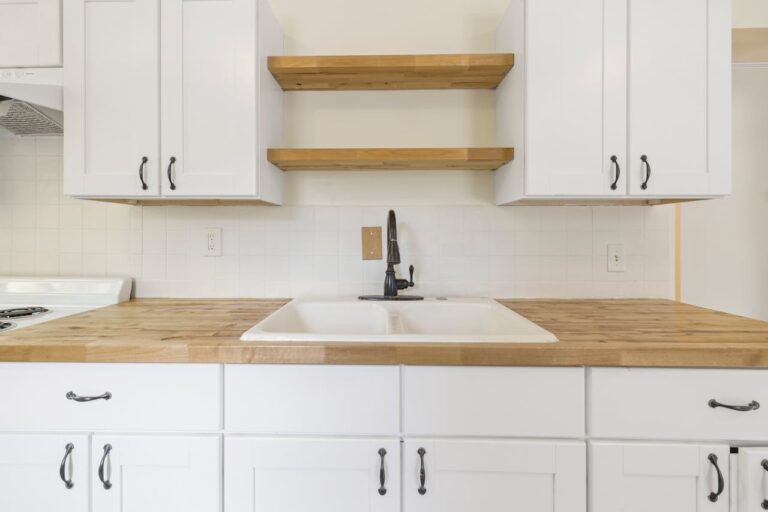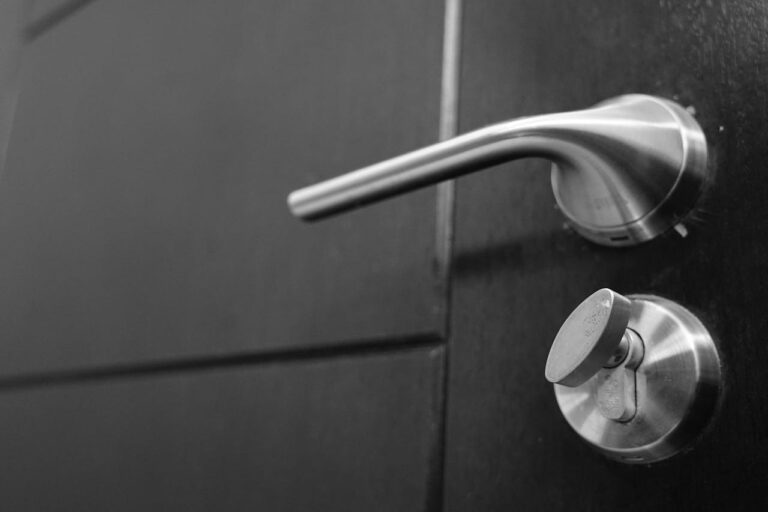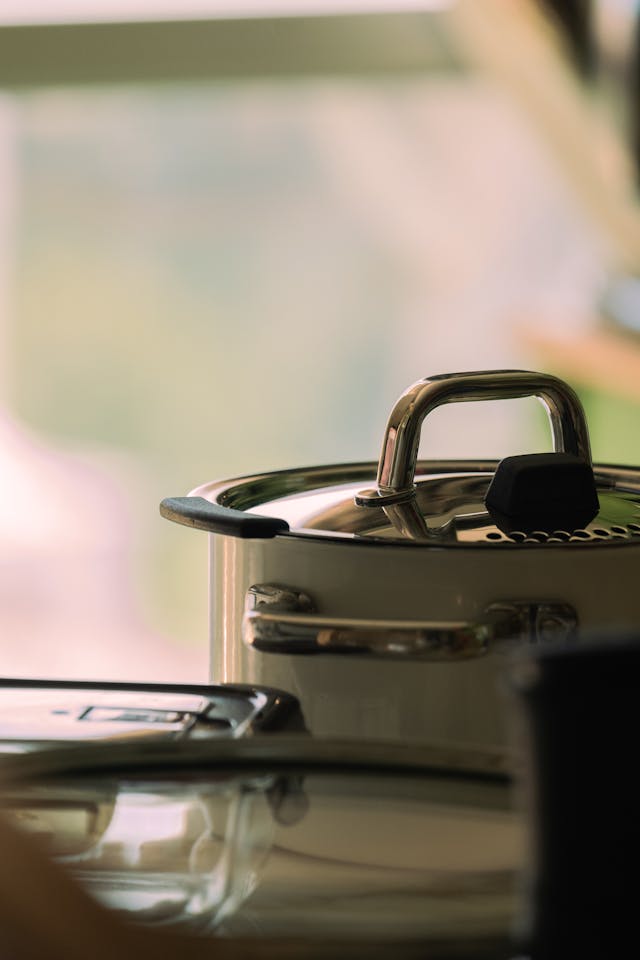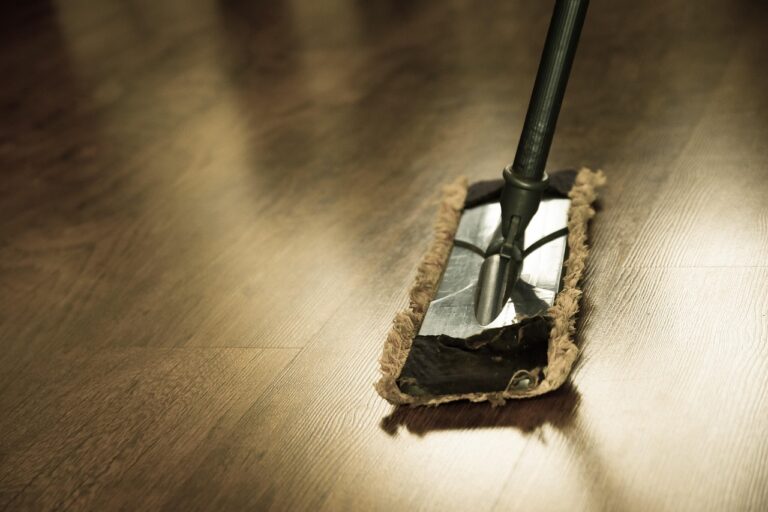A clean kitchen doesn’t happen by accident. It takes a regular rhythm of upkeep to keep things sanitary, functional, and pleasant to cook in. Here’s a straightforward weekly checklist that covers the spots most likely to collect grime, bacteria, and buildup.
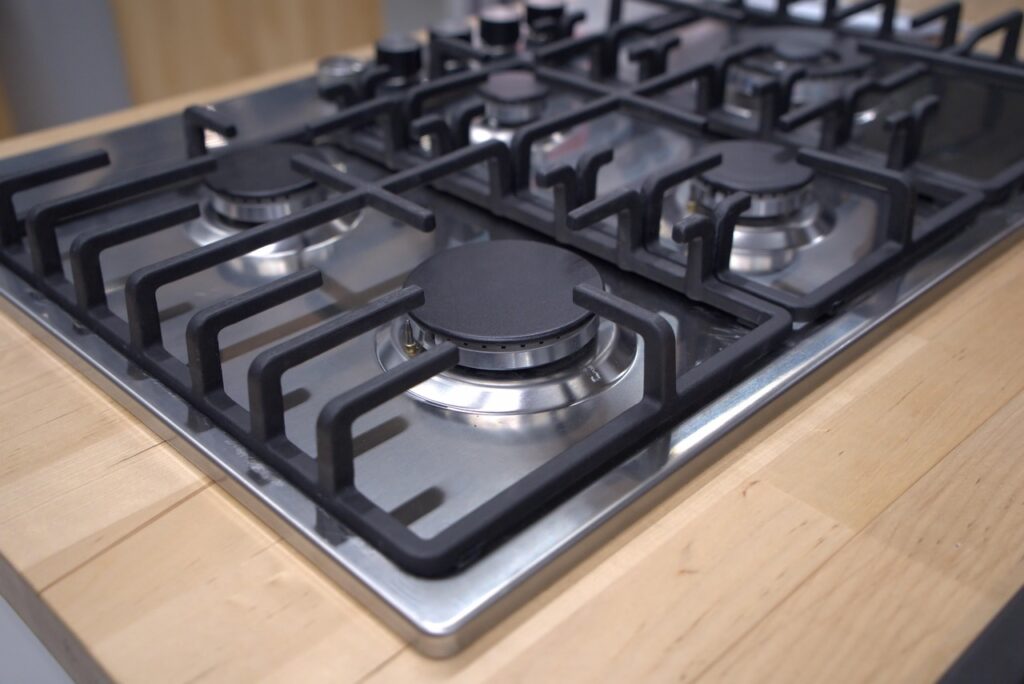
Why Weekly Cleaning Matters
Some kitchen surfaces handle raw food. Others trap grease or moisture. Weekly attention keeps these areas from becoming actual health hazards or stubborn cleaning projects. A consistent routine also means less scrubbing and more time doing things that actually matter.
1. Sink and Faucet
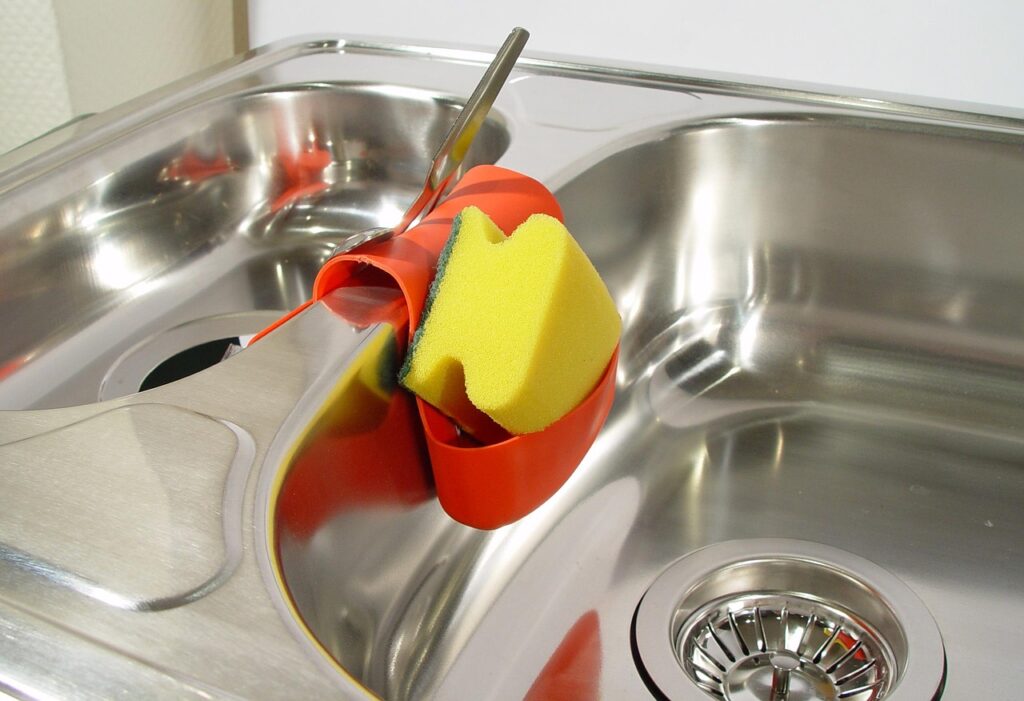
The kitchen sink touches everything from raw chicken to dirty sponges. Bacteria can build up quickly in the basin, around the drain, and on the faucet handles.
Scrub the entire basin with a disinfecting cleaner, then rinse thoroughly. Don’t skip the faucet base where water pools and grime hides. A quick wipe with a microfiber cloth keeps hard water spots from settling in.
2. Sponges and Dish Brushes
These cleaning tools collect food particles and moisture. That combination creates a breeding ground for bacteria, which then spreads to everything they touch.
Replace sponges weekly or run them through the dishwasher to reduce bacteria. Dish brushes can also go in the dishwasher. If something smells off, toss it immediately.
3. Countertops
Counters collect crumbs, spills, and bacteria from hands, groceries, and food prep. Even surfaces that look clean can harbor germs you can’t see.
Wipe down all counters with a disinfectant or a vinegar solution, including the backsplash and edges. Move small appliances to clean underneath. Cutting board storage areas deserve extra attention since they often trap moisture.
4. Stovetop and Knobs
Cooking splatters grease and food particles across the stovetop. Knobs accumulate sticky residue from hands and airborne grime. Left alone, these spots harden and become difficult to remove.
Remove knobs if possible and soak them in warm soapy water. Scrub the stovetop with a degreaser, paying attention to burner edges and drip pans. A toothbrush works well for crevices.
5. Microwave Interior
Steam, splatters, and exploded leftovers coat the microwave walls. This buildup doesn’t just look bad—it can harbor bacteria and affect how the appliance heats food.
Heat a bowl of water with lemon slices for three minutes, then let it sit for five more. The steam loosens grime so it wipes away easily. Don’t forget the turntable and door seals.
6. Refrigerator Shelves and Drawers
Spills drip onto shelves. Produce sheds dirt in crisper drawers. Expired items leak. All of this creates a sticky, smelly mess that can contaminate fresh food.
Pull out shelves and drawers to wash with warm soapy water. Check expiration dates while wiping down bottles and containers. The door seals also collect crumbs and deserve a quick wipe.
7. Trash and Recycling Bins
Bins collect leaks, food residue, and unpleasant odors. Even with bags, bacteria can spread to the bin itself and surrounding surfaces.
Wash bins in a bathtub or large sink with hot soapy water and disinfectant. If that’s not practical, wipe the interior and exterior thoroughly with disinfecting wipes. Let them air dry completely before replacing bags.
8. Kitchen Floor
Floors catch dropped food, tracked-in dirt, and spills. High-traffic areas near the stove and sink tend to collect the most grime.
Sweep or vacuum first to remove debris, then mop with a floor-appropriate cleaner. Pay extra attention to corners and under cabinets where dust and crumbs accumulate. Move small rugs and mats to clean underneath.
9. Dish Towels
Towels dry hands and dishes throughout the week. They also pick up bacteria from counters and food prep surfaces. A damp towel left hanging becomes a germ magnet.
Wash all kitchen towels in hot water with detergent. Use separate towels for hands and dishes to reduce cross-contamination. Hang them to dry completely between uses instead of leaving them bunched up.
10. Coffee Maker or Kettle
Mineral deposits and coffee oils build up inside these appliances. Over time, this affects taste and can even create mold in hidden components.
Run a brewing cycle with equal parts water and white vinegar, then run two cycles with plain water to rinse. Wash removable parts like carafes and filter baskets with soap and water. Kettles benefit from the same vinegar treatment.
11. Cabinet Fronts and Handles
Hands touch cabinet doors and handles constantly while cooking. Grease from cooking also settles on nearby surfaces. These areas develop a sticky film that attracts more dirt.
Wipe down cabinet faces with a damp cloth and mild cleaner. Pay special attention to handles near the stove where grease concentrates. A degreasing spray works well for stubborn buildup.
12. Light Switches and Outlets
Fingers touch light switches after handling raw meat, taking out trash, or wiping counters. These high-touch spots rarely get attention but can harbor significant bacteria.
Wipe switches and outlet covers with a disinfecting wipe. Be gentle around outlets to avoid moisture getting inside. This takes 30 seconds but makes a real difference in reducing germ spread.
What Happens When You Skip These Tasks
Missing a week here and there won’t ruin things. But consistent neglect turns simple wipes into deep-cleaning projects. Grease hardens. Bacteria multiply. Odors settle in. Staying on top of these tasks prevents bigger messes and keeps the kitchen genuinely clean instead of just looking acceptable.
Wrapping Up
A clean kitchen comes down to consistency. These 12 tasks form a manageable weekly routine that prevents buildup and keeps things sanitary. Pick a day, set a timer, and work through the list

